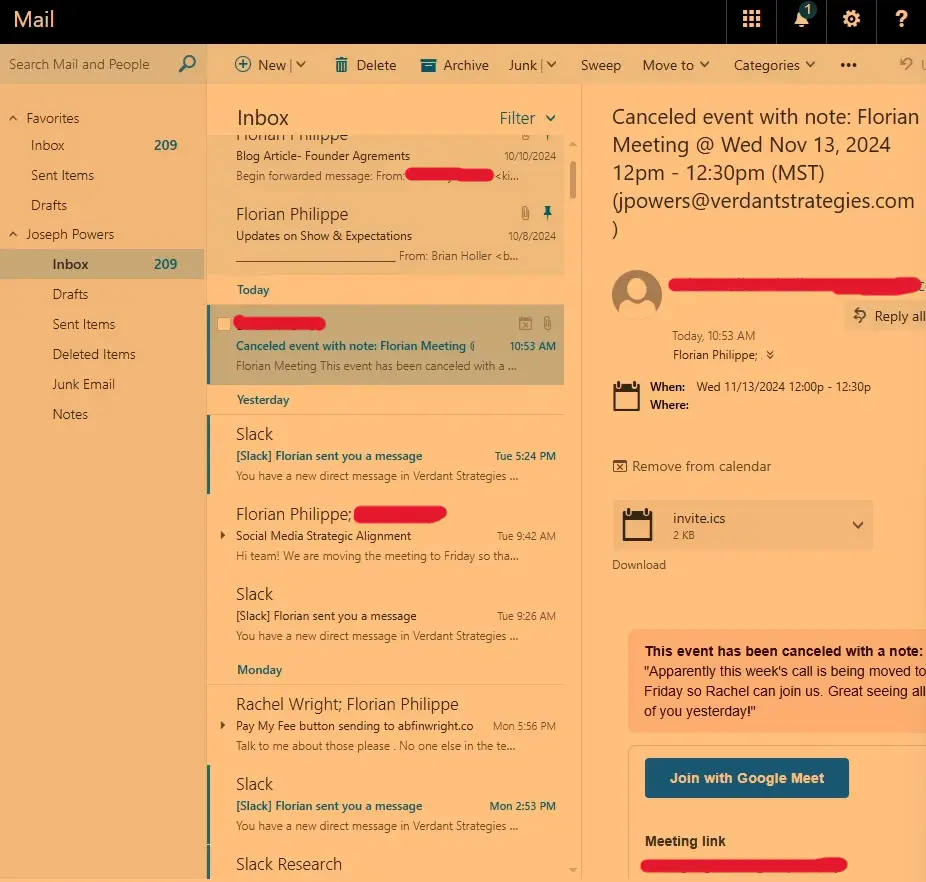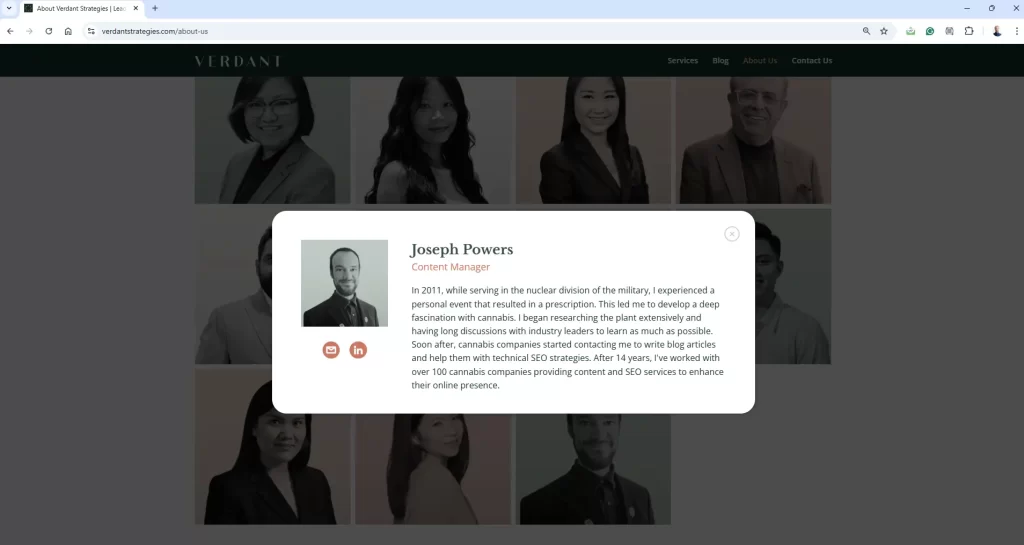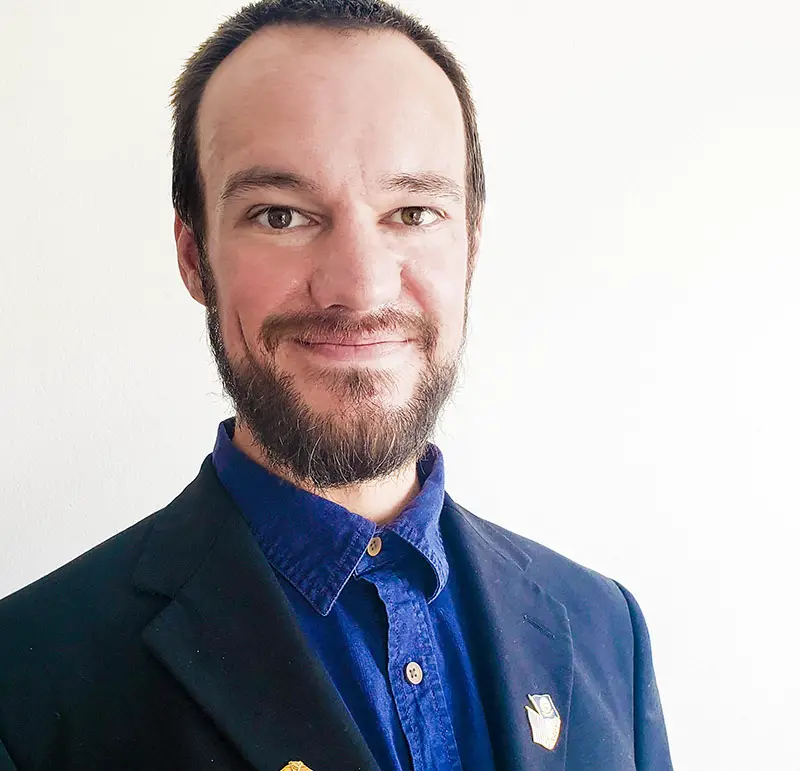In this post, I walk through the clearest signs of employee misclassification based on my experience working with Verdant Strategies.
Though I was labeled an independent contractor, the company’s behavior and expectations closely aligned with an employer-employee relationship.
Follow my potential independent contractor misclassification case study where I document my ongoing dispute with a cannabis accounting firm in California known as Verdant Strategies powering 420 CPA.
How Verdant Strategies Misclassified Joseph Powers: 14 Signs I Was Actually An Employee
Verdant Strategies potentially misclassified me as an independent contractor despite clearly treating me like an employee.
This blog documents 14 legal indicators that demonstrate the company’s control, integration, and direction over my work — which I’m using as the foundation of my legal strategy to pursue proper classification, back pay, and potential damages.
If you’re a freelancer or contractor and this sounds familiar — you may be misclassified too.
Joseph Answers Common Questions To Identify Misclassification

1. Where You Told When, Where, And How To Do Your Work
Yes — Verdant Strategies exercised control over when, where, and how I performed my work.
Each of these factors demonstrates an employee-style relationship, not the independence expected of a contractor.
When
I was expected to be available during regular business hours, respond promptly to messages, and publish content according to deadlines dictated by the company.
Even though the contract didn’t outline specific working hours, in practice I was expected to operate on Verdant’s internal timeline and was criticized if I didn’t respond or deliver quickly enough.
The CEO also directed when content should or should not be posted, even pausing all content that was already scheduled for publication.
The CEO Rachel Wright and the CMO Florian Philippe dictated not only the cadence of posts but also the platform, tone, and visual presentation.
Verdant’s workflow required near daily involvement, specifically content approvals.
Despite my creating and organizing content 30 days in advanced, I still had to chase approvals on a near daily basis.
Where
While I worked remotely, the company still maintained control over the virtual work environment.
I was required to collaborate through their platforms and participate in meetings and shared workspaces.
The digital “workplace” was entirely dictated and managed by Verdant.
How
I was instructed on how content should be created, edited, and presented.
The CEO and CMO reviewed and approved my work, required me to revise posts to fit CEO Rachel’s preferences, and trained me on company-specific tools and processes.
From writing style to visual formatting, I was expected to follow strict internal guidelines and workflows.
At one point, I was explicitly told to by Rachel Wright to stop publishing altogether until she had a plan, which directly interfered with my ability to perform independently.
Verdant frequently demanded I reschedule content that was already approved and scheduled for publication to then create new content promoting their attendance at events.
In addition to my contractual duties, I was regularly required to do additional work that fell outside of the scope of our formal agreement.
Additional duties that fell outside of my contractual obligations included.
- Website design, updates, category improvements for SEO value, and fixing broken links and other issues.
- Publishing additional content for Beard Bros, Verdant’s friends, partners, and contractor.
- Managing other team members content workflow.
- Editing previous content.
2. Where You Required To Follow Internal Processes Or Get Approvals
Yes. Every piece of content had to be approved in advance.
I submitted and scheduled a full content calendar for November and December.
Despite the fact that the November’s content calendar was fully approved by Florian, Rachel unilaterally ordered me to unscheduled all posts.
The CEO and CMO regularly gave me contradictory feedback and required frequent resubmissions based on Rachel’s changing preferences, making it impossible to act independently or execute without managerial input and interference.
Furthermore, Verdant regularly attended frequent industry events that required immediate rescheduling of content that was already approved and scheduled for publication.
3. Was Your Work Exclusively Or Primarily For One Company
Yes. I was fully dedicated to Verdant Strategies throughout the duration of the contract.
The company expected full availability and prioritized their work above any other opportunities, which in practice meant I did not and could not reasonably take on other clients during this time.
My spouse took over the workload for all other clients, while I specifically focused on Verdant’s constantly changing and evolving projects.

4. Where You Using The Company’s Tools, Systems, Or Email
Yes. I used their brand accounts to publish content, access backend systems, and collaborate.
Communications were conducted through platforms like Slack and shared drives, which further integrated me into their internal operations.
I was required to use the company tool, communication platforms, SOPs, and templates.
Company tools, systems, and email the company required I used included.
- Branded company email – jpowers@verdantstrategies.com
- Figma
- ClickUp
- Rachel’s Personal LinkedIn
- FreePix
- HubSpot
- WordPress
- Google Search Console
- Google Analytics
- Descript
- Pix.io
- Shared company file management drives – Google Drive
- Social Media: YouTube, Instagram, Facebook, company LinkedIn
- Social media publication link sheet
- Timesheet
5. Was The Work You’re Doing Is Part Of The Company’s Core Business
Yes. I managed Verdant’s digital presence, including social media, blog publishing, newsletters, and video content.
These are central to the company’s brand, visibility, and client engagement strategy, and were critical to their business operations in achieving their primary goal of staying top of mind with prospects and to get more organic leads through the content.
6. Did You Receive Training From The Company
Yes. I received direct training on a wide range of internal tools and systems used by Verdant Strategies.
These included platforms and software essential to daily operations, indicating that the company expected me to work within their existing infrastructure.
I was also required to adjust content based on direct feedback from the CEO and CMO, which is another form of on-the-job training.
This structured training and deep integration into the company’s digital ecosystem reflect how thoroughly I was embedded into their internal team — not as an independent contractor, but as an employee in practice.
7. Where You Expected To Work Set Hours Or Be Available During Specific Times
Yes. While hours were not explicitly stated in the contract, I was expected to be responsive during business hours and deliver work according to company timelines.
Delays or availability issues outside of typical working hours were met with criticism or concern.
Frequently, I was expected to join conference calls that were spontaneously required without notice.
8. Where You Required To Report To A Supervisor Or Manager
Yes. I reported directly to the CMO Florian Philippe, who exercised significant oversight of my day-to-day activities.
Florian and CEO Rachel reviewed all strategic plans, content calendars, and individual posts, often requiring revisions and frequently withheld approval altogether while they expected me to chase approvals on a near daily basis before I could publish content.
9. Where You Prevented From Working For Other Clients
Functionally, yes.
Though not expressly forbidden, the demands of the role, the communication expectations, and the need to be available for feedback and meetings made it impractical to commit to other clients.
I could not have had two clients like Verdant Strategies.
10. Where You Required To Attend Meetings Or Check-Ins
Yes. I participated in unplanned calls, planning calls, and regular check-ins, primarily with the CMO.
These sessions were allegedly used to review work, discuss priorities, and align on content direction, further establishing an employee-like relationship.
Although I was in frequent meetings, most meetings I was involved in either required very little participation (less than one minute) or no participation at all.
Meetings were mostly irrelevant to my role, we regularly discussed topics that fell outside of my contractual duties.
The one meeting I was in with Rachel Wright that was suppose to involve her approving a months worth of planned content, only led to Rachel approving a few days worth of content before she had to go to another meeting.
I was required to attend frequent meetings.
- Sep 23 – 33 minutes
- Oct 2 – 23 minutes
- Oct 3 – 55 minutes
- Oct 4 – 41 minutes
- Oct 10 – 10 minutes
- Oct 16 – 24 minutes
- Oct 23 – 52 minutes
- Oct 23 – 16 minutes
- Nov 11 – 50 minutes
- Nov 12 – 14 minutes
- Nov 13 – 22 minutes
- Nov 15 – 65 minutes
- Nov 15 – 11 minutes
- Nov 19 – 15 minutes
- Nov 19 – 46 minutes
- Nov 20 – 37 minutes
- Nov 20 – 28 minutes
- Nov 26 – 27 minutes
- Nov 26 – 43 minutes
- Nov 27 – 17 minutes
- Nov 27 – 33 minutes
- Dec 10 – 23 minutes
- Dec 11 – 63 minutes
- Dec 18 – 62 minutes
See video recording of all meetings. (Coming soon)
Company team members I was in regular meetings with included.
- Rachel Wright – CEO
- Stephanie Jeffries – Business Development Administrator
- Florian Philippe – Chief marketing Officer
- Simon Menkes – CPA blog writer
- Garry Pannu – Web Developer
- Charlene Estrada – Operations
- Fiona Chen – UX Designer
- Brian Holler – Friend partner, and contractor
11. Was Your Work Ongoing, Not Project-Based Or Temporary
Yes. The contract spanned six months with ongoing responsibilities.
My role wasn’t tied to a single deliverable or outcome but required continuous engagement across multiple content channels.
My role kept expanding to the point where CMO Florian expressly stated that he wanted me to own all of Verdant’s digital marketing efforts.
My role was suppose to be project based where I’d quickly create and schedule content at least one month in advanced.
Due to the nature of Verdant’s workflow and internal processes, my work
12. Did You Have A Business License Or Business Insurance
No. I was operating as an individual. I did not have a business entity or independent insurance.
I operate as a sole proprietor under a DBA (Doing Business As), but I did not hold a separate business license specific to this engagement, nor did I carry business liability insurance.
While I had a formal business name for general freelancing purposes, my work with Verdant Strategies did not resemble a client-provider relationship.
Instead, I was fully integrated into their internal operations and treated as an employee — receiving task assignments, undergoing training, using their tools, and following their direction — which goes beyond the typical scope of an independent business arrangement.

13. Where You Listed On The Company’s Website, Org Chart, Or Slack Workspace Like An Employee
Yes. I was publicly listed on the company’s website as a team member, which gave the impression to clients and visitors that I was a regular part of the internal staff.
My name and job title was clearly posted for public view on their website.
I was also included in the company’s internal Slack workspace and collaborated with the team in real-time, further integrating me into the daily operations of the business.
14. Did You Use Company-Provided Uniforms, Business Cards, Or Branded Materials
No uniforms or cards were provided to me, but I created and published branded materials on behalf of the company.
I was publicly representing their brand voice, often speaking as the company in published content.


